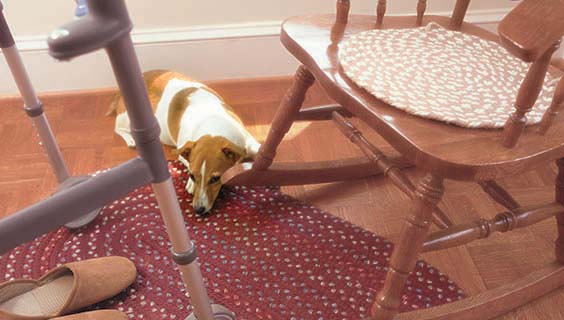Have you ever stumbled on the edge of a throw rug, or lost your balance standing? Perhaps you have stairs in your home that give you a case of nerves every time you have to navigate them. If you’ve ever fallen, tripped, or lost your balance and had to grab hold of something to steady yourself, take a deep breath and then slowly exhale. You are not alone. According to the Center for Disease Control and Prevention, more than one out of four older people (65 or older) falls each year, but less than half tell their doctor.
The Mayo Clinic has found that falls are the leading cause of injury among older adults. The reason falls become more prevalent as we age may include a variety of factors. Physical changes such as weakening vision or hearing loss may affect balance. Illness or injury may cause slower movement and reaction. Even medication could pose a potential fall risk. Not all falls cause injuries, but one in five falls could cause a serious injury such as a broken bone or head injury. A serious fall may reduced mobility or independent function. The trauma of a non-threatening fall could be just as damaging, too. For some, the fear of falling again is enough to immobilize them. They fear any activity that would put them at risk for a fall but in doing so, become less active, lose muscle tone, and ultimately see a decline in overall health.
A simple discussion with your healthcare provider can assess your fall risk and provide helpful prevention tips. A change in vision may not be immediately noticeable to you, but it can pose a fall risk. Getting regular vision and hearing tests is vital to fall prevention. Your environment may be putting you at risk, too. Floor rugs that slip, cluttered walkways and poor lighting are all preventable risks. Clear away clutter. If you must use rugs, be sure to use non slip rug pads to keep them in place. Regularly change burned out and dim light bulbs. Use nightlights and keep flashlights on hand in case of power outages. Consider installing grab bars in the shower and railings on both sides of stairs. Wear sensible shoes. Exercise regularly to maintain flexibility, strength and balance. And remember that it’s always a good idea to ask for help. Your doctor can refer you to an occupational therapist who will assess your risk and provide you with much more advice and assistance that is specific to your personal needs. You can also ask to be referred to a physical therapist for help staying active and mobile. Take control of your future by being proactive with fall prevention.
Contact Home Safety Services for all of your Falls Prevention needs.
Post Credit: Be Active Be Well-In Home Physical Therapy, https://beactivebewell.com/

